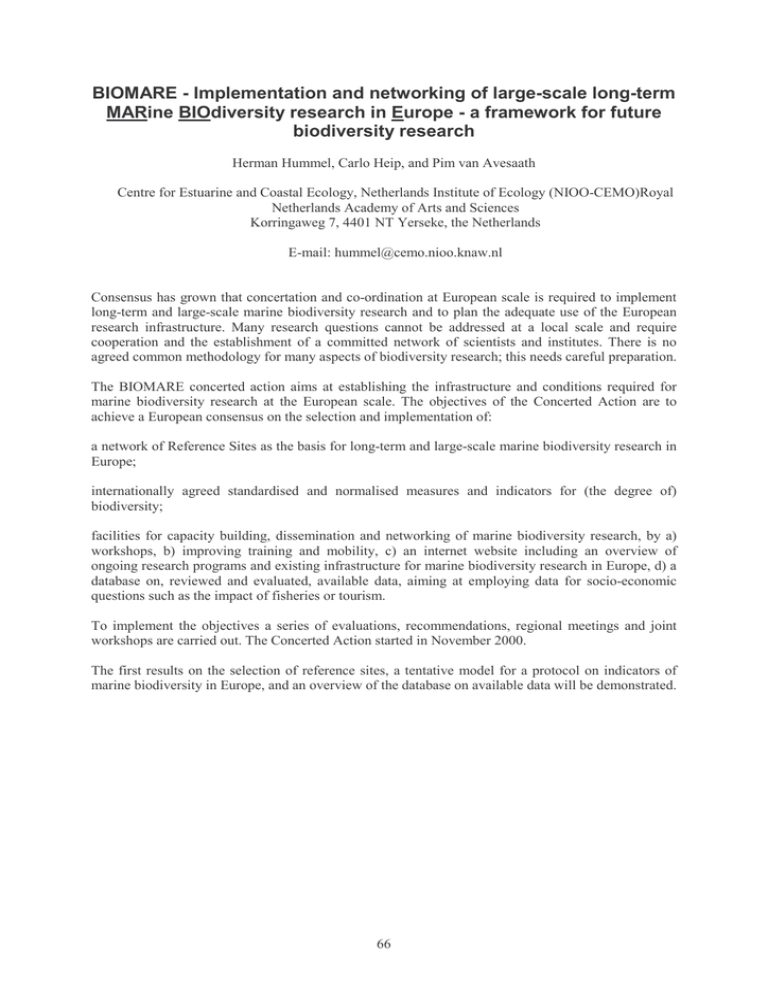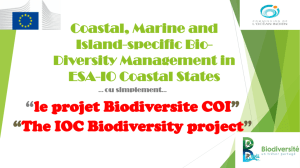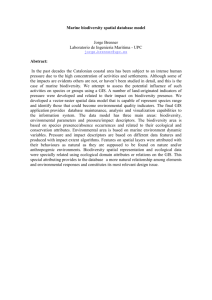BIOMARE - Implementation and networking of large-scale long-term
advertisement

BIOMARE - Implementation and networking of large-scale long-term MARine BIOdiversity research in Europe - a framework for future biodiversity research Herman Hummel, Carlo Heip, and Pim van Avesaath Centre for Estuarine and Coastal Ecology, Netherlands Institute of Ecology (NIOO-CEMO)Royal Netherlands Academy of Arts and Sciences Korringaweg 7, 4401 NT Yerseke, the Netherlands E-mail: hummel@cemo.nioo.knaw.nl Consensus has grown that concertation and co-ordination at European scale is required to implement long-term and large-scale marine biodiversity research and to plan the adequate use of the European research infrastructure. Many research questions cannot be addressed at a local scale and require cooperation and the establishment of a committed network of scientists and institutes. There is no agreed common methodology for many aspects of biodiversity research; this needs careful preparation. The BIOMARE concerted action aims at establishing the infrastructure and conditions required for marine biodiversity research at the European scale. The objectives of the Concerted Action are to achieve a European consensus on the selection and implementation of: a network of Reference Sites as the basis for long-term and large-scale marine biodiversity research in Europe; internationally agreed standardised and normalised measures and indicators for (the degree of) biodiversity; facilities for capacity building, dissemination and networking of marine biodiversity research, by a) workshops, b) improving training and mobility, c) an internet website including an overview of ongoing research programs and existing infrastructure for marine biodiversity research in Europe, d) a database on, reviewed and evaluated, available data, aiming at employing data for socio-economic questions such as the impact of fisheries or tourism. To implement the objectives a series of evaluations, recommendations, regional meetings and joint workshops are carried out. The Concerted Action started in November 2000. The first results on the selection of reference sites, a tentative model for a protocol on indicators of marine biodiversity in Europe, and an overview of the database on available data will be demonstrated. 66



